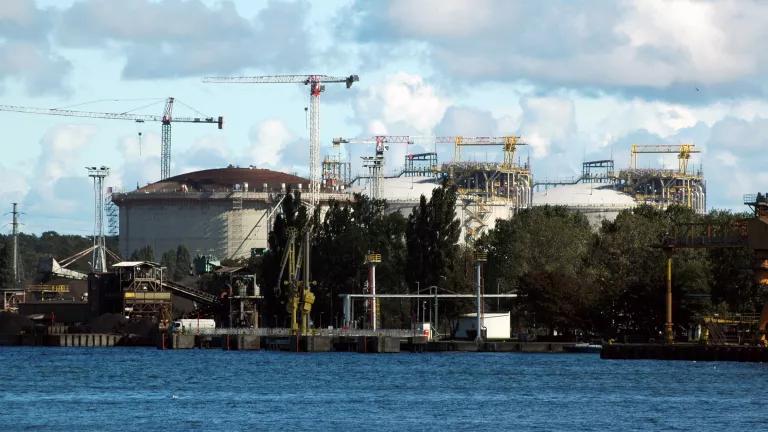How to Make Two Vital Tax Incentives Even Better (Part II)
Making Green Muni Bonds Even Better
Making Green Muni Bonds Even Better
When state and local governments issue bonds to finance infrastructure or other expenditures, they can borrow at a lower interest rate because the interest they pay on the bond is generally tax free to the investor. State and local governments could expand their investor base if they had the option of issuing taxable bonds and receiving a direct federal government payment approximately equal to the interest differential. This option would be particularly valuable for “green” infrastructure financing.
Under current law, the interest on bonds issued by state and local governments (municipal bonds) is generally tax-exempt. As a result, the holder will accept a lower interest rate than the rate payable on a taxable bond. For example, suppose that taxable bonds pay 10% annual interest and that an investor is in a 40% marginal federal tax bracket. If the investor buys a $1,000 10% taxable bond, the investor receives $100 of interest each year, pays $40 of tax on the interest and receives $60 after tax. The investor is in the same after-tax position if the investor buys a 6% tax-exempt bond, receiving $60 of interest each year but paying no tax on the interest.
The tax exemption for municipal interest allows the issuing state or local government to issue bonds bearing a lower interest rate, thus reducing the interest cost of issuing the bonds. This benefit is actually an incentive payment from the federal government, since the federal government is giving up the tax that it would otherwise collect by taxing the interest paid to the investor. In our example above, the federal government is giving up the $40 of annual tax that it would collect from the holder of the $1,000 10% taxable bond.
Although the ability to issue tax-exempt bonds is a significant benefit for municipalities, there are drawbacks to this method of delivering the federal incentive in this manner. One drawback is that the ability to receive tax-exempt interest is only a benefit for investors that would otherwise pay tax on the interest. But tax-exempt investors, such as pension funds, university endowments and private foundations, do not generally pay tax on the interest they receive on their investments. Similarly, foreign investors generally do not pay tax on the interest they receive on U.S. bonds. Therefore, these kinds of investors would generally not invest in municipal bonds because they would not accept the lower interest rate they would receive on these bonds as compared with taxable bonds. Moreover, these are important investors in “green” bonds (bonds issued to finance clean energy, energy efficiency, low carbon activities, or resilience), and they would not generally invest in green municipal bonds.
A second drawback is that the tax-exempt bond market is much smaller than the taxable bond market. In times of extreme economic stress, such as the current economic crisis resulting from COVID-19, municipal bond holders can find it difficult to sell their bonds because there are not sufficient buyers on the market. While the $3.8 trillion municipal bond market may seem huge, it is not large enough to prevent this problem. It would be vastly preferable to enable green municipal bond holders to access the $40 trillion bond market.
A third drawback is that part of the federal incentive paid on tax-exempt bonds actually goes to high income bondholders rather than the issuing municipalities. The reason is that municipal bond issuers must pay sufficient interest to attract taxpayers that don’t pay the highest marginal tax rates to sell all of their bonds. At this higher interest rate, taxpayers at the highest marginal tax rates (the highest income taxpayers) receive an additional benefit.1
These problems can be addressed if municipalities issued taxable bonds and federal government paid the interest differential directly to the municipal government. In our example above, the municipality would issue a $1,000 10% taxable bond and the federal government would make a $40 payment to the issuing municipality each year. After the payment, the net interest cost to the municipality would be $60, the same as if it had issued a $1,000 6% tax-exempt bond.
There is actually a precedent for this approach. The 2009 economic stimulus bill established the Build American Bonds (BAB) program. The BAB program allowed municipalities to issue taxable bonds and receive a direct payment from the federal government equal to 35% of the interest payments on the bonds. Thus, the net interest cost to the issuing municipalities was 65% of the taxable bond rate, which approximated the tax-exempt bond rate.
The BAB program was extremely popular. Approximately $181 million of municipal bonds was issued under the program between April 2009 to December 2010, constituting about one-third of the long-term municipal bonds issued during that period. There were significant savings to the municipal issuers.2 However, the BAB program expired and is no longer available.
The Moving Forward Act passed last year by the House of Representatives included a provision for “Qualified Infrastructure Bonds”, which were taxable municipal bonds. Under the QIB provisions, modeled after BABs, the issuing municipality would have received a direct federal payment approximately equal to the interest differential between taxable and tax-exempt bonds. A larger payment was provided for the early years to provide additional stimulus in the wake of the COVID-19 crisis. However, the Moving Forward Act was not enacted.
But the principle behind BABs and QIBs—that municipalities should be able to issue taxable bonds and receive the interest savings currently delivered through the federal tax exemption for interest as a direct federal payment—should be incorporated into the Biden administration’s legislative proposal on infrastructure. The program should be non-expiring (unlike the BAB program).
But that’s not all. We want to create smart incentives for municipalities to build low carbon emission and climate resilient infrastructure and thus help to address our climate change challenge—but also drinking water and wastewater projects, biodiversity and sustainable agriculture projects, and projects that reduce other emissions or pollution or further resilience. Through the BAB/QIB model, we can adjust the amount of the federal payment—and provide larger payments to encourage projects that further these and other important goals.
(For more on how to make the renewable energy tax incentives even better, please see this earlier blog.)
1. Suppose, for example, that a municipal bond issuer must attract taxpayers paying a 30% marginal tax rate in order to sell all of its bonds. If the taxable bond rate is 10%, the municipality must pay 7% interest on its bonds in order for investors at the 30% marginal tax rate to get the equivalent of a 10% taxable yield (the investor would receive 10% on a taxable bond, pay 30% of this in tax, and retain 7% after tax,). But investors in a higher marginal tax bracket, say a 40% bracket, can buy the same 7% tax-exempt municipal bonds, and they receive 7% tax free. For a 40% bracket investor, this is equivalent to an 11.7% taxable bond. After tax, they receive 7%, rather than the 6% after-tax return they would receive on a 10% taxable bond. In effect, these higher income taxpayers are receiving part of the federal incentive payment provided by the tax exemption.
2. See U.S. Treasury Department, Treasury Analysis of Build America Bonds Issuance and Savings, 5/16/11 (https://www.treasury.gov/initiatives/recovery/Documents/BABs%20Report.p…).



